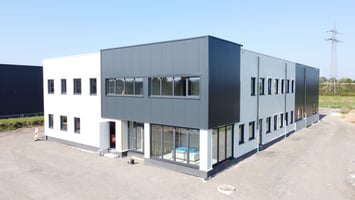Waste-to-Energy Plants Producing Steel as a By-Product: The Future of Steel Mills? We are very...
Optimizing EAF Yield and DRI Integration with quick next-to-furnace OES Slag Analysis
Optimizing Fe Yield and DRI Integration in EAF Operations with Advanced OES Technology
As the steel industry shifts towards sustainable “green steel” production, the challenges of Electric Arc Furnace (EAF) operations are increasing. With an increased reliance on Direct Reduced Iron (DRI) and Hot Briquetted Iron (HBI) and fluctuating scrap quality, EAF operators face a pressing need to optimize Fe yield while maintaining cost-efficiency. A critical factor in achieving this is precise slag control. However, traditional slag analysis methods, often slow and reactive, limit the potential for real-time adjustments, especially in fast-paced EAF operations.
The Slag Control Challenge in Modern Steelmaking
Slag composition plays a crucial role in optimizing furnace efficiency, but it has typically been assessed retrospectively, particularly in special steel production and other applications with longer processing times. In the fast tap-to-tap times typical of rebar steel mills, slag analysis is often omitted, given the lengthy preparation and evaluation process of conventional methods like X-Ray Fluorescence (XRF). As a result, EAF operations frequently rely on set recipes or complex scrap and furnace modeling to manage fluctuations in input material quality. While this approach provides a baseline, it falls short of delivering the adaptability needed for today’s dynamic steelmaking environment.
Enter Optical Emission Spectrometry (OES) for Rapid Slag Analysis
Optical Emission Spectrometry (OES), widely used in metal analysis, is now transforming slag control in EAF operations. Recent advancements in OES technology, including digital sample homogenization, have eliminated the need for time-consuming physical sample preparation, enabling rapid in-situ slag analysis. By evaluating slag samples on-site in real time, operators can make immediate, precise adjustments to slag composition.

Alexander Schlemminger presenting during the annual meeting in Bergamo
This efficiency is especially beneficial for an optimum yield, where quick response times can significantly enhance furnace performance. OES technology allows for sampling frequency increases and provides results up to 90% faster than traditional methods, reducing both costs and downtime associated with lengthy sample processing. Operators can now easily assess factors such as Ca and Mg content, enabling foaming control and optimized slag composition at each stage of the melt process.
Key Benefits for EAF Operations and Green Steelmaking
The ability to conduct real-time slag analysis provides several essential benefits for EAF operators:
- Improved Fe Yield: Accurate in-situ measurements allow operators to adjust the slag composition proactively, maximizing iron recovery from the melt.
- Enhanced Phosphorus Control: Real-time phosphorus saturation analysis helps operators make informed decisions about high-phosphorus DRI inputs, mitigating quality issues in the final product.
- Adaptability for Sustainable Inputs: OES analysis supports the use of lower-quality scrap and sustainable inputs, aligning with carbon reduction goals without sacrificing production efficiency.
A New Era of Cost-Effective, High-Precision EAF Operations
By leveraging advanced OES technology, EAF operators can meet the demands of modern steelmaking with agility and precision. Quantolux’s pioneering approach in utilizing OES for digital sample homogenization opens up transformative possibilities for the industry, making it possible to achieve real-time slag control even in the rapid cycles of rebar steel production. The result is a more responsive, efficient, and sustainable process that aligns with the industry’s transition towards carbon-neutral steel.
As the steel industry continues to evolve, fast and simple OES technology offers a crucial advantage in meeting future demands. Quantolux is proud to lead this change, helping steel producers achieve optimal Fe yield, improve cost-efficiency, and support the global shift towards sustainable steel production.
Questions: alexander.schlemminger@quantolux.de
Regular Updates on Linkedin: https://www.linkedin.com/in/alexander-schlemminger-44768187/




